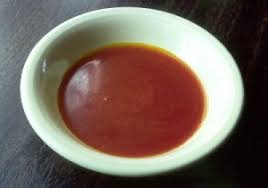
The vitamins in palm oil are almost only three, talking of vitamin K biochemically known as phyloquinone, vitamin A biochemically known as retinol, and vitamin E biochemically known as tocopherol. Although vitamin K is directly present in palm oil, vitamins A and E are however present indirectly in the forms of their precursor metabolites, talking of carotene and tocotrienols respectively. When palm oil is ingested as a component of foods or diets, the vitamin A content is automatically sourced from absorption for use in its normal physiological function.
This physiological function is the mediation of blood clotting during haemorrhage or bleeding. You can now begin to comprehend why a deficiency of vitamin K is one of the causes of haemophilia, i.e. inability of the blood to clot. The precursor vitamin A which is carotene is metabolised on stepwise transformation by an intestinal enzyme to retinal which is an adehyde and then a liver enzyme to retinol which is an alcohol. From the liver, the retinol finds its way to the eye tissue where it plays its physiological role of rodopsin generation for sight or vision. You can now also begin to appreciate the fact that a deficiency of vitamin A is one basic cause of night blindness. Vitamin E is also transformed by liver enzymes from tocotrienol to tocopherol after which it finds its way to various tissues in the body where it functions as an antioxidant. Being an antioxidant means that it prevents reactive oxygen radicals generated from some redox reactions in the cells from oxidizing cellular DNA for mutations from which cancer can essue. Again, its deficiency can be implicative in anti-oncogene deterioration for cancer development. As to lipids as the second class of nutrients present in palm oil, the idea is that the specific type of lipids present in palm oil is the triacylglycerols, i.e. lipids whose structural architecture is such that a glycerol backbone is esterifed to three fatty acids, each to one of its hydroxyl groups.
Normally, when palm oil is ingested, these triacylglycerol lipids are digested to fatty acids and glycerol in the intestinal tract after which they are absorbed into the bloodstream enroute to the adipose tissues of the skin where the adipocytes or fat-storing cells esterify them back to triacylglycerols for temporary storage in the skin. Later at some unusual conditions of the body like fasting, sickness, malnutrition, etc, during when the body is either not having enough glucose from nutrition or its glucose supply is depleted faster than normal for use in energy generation through oxidative phosphorylation or tissue respiration, the body resorts to mobilising the fatty acids of the triacylglycerols stored in the skin as second choice alternative substrates for energy generation through the pathway of beta-oxidation preluding to Kreb's Cycle and the mitochondrial electron transport chain. But then, the specific fatty acids present in palm oil triacyglyerols are palmitic acid with a fatty acid percentage composition of 45%, stearic acid with a fatty acid percentage composition of 5%, oleic acid with a fatty acid percentage composition of 40%, and linoleic acid with a fatty acid percentage composition of 10%. Palmitic acid and stearic acid are both saturated fatty acids and thus have a high thermal fragmentation resistance during palm oil bleaching in domestic cooking, whereas both oleic acid and linoleic acid are unsaturated fatty acids and thus have a low thermal fragmentation resistance during bleaching on domestic cooking. What this means is that when palm oil is bleached during its use for domestic cooking, whereas palmitic acid and stearic acid remain intact for their chain integrity, oleic acid and linoleic acid experience thermal cleavages of the pie election-based olefinic or double bonds present in their chains. The cleavages of the double bonds in these unsaturated fatty acids render the fatty acids susceptible to transformation to cholesterol such that sooner or later in the cooking progress, cholesterol builds up in the food being cooked. When the food is eventually ingested by the cook or another consumer, the built up cholesterol floods his system to orchestrate arteriosclerosis from which hypertension develops in no distant time. In essence, palm oil has this limitation of excessive bleaching-orchestrated thermal cleavages of the double bonds or olefinic bonds of its unsaturated fatty acids for in-situ cholesterol generation.